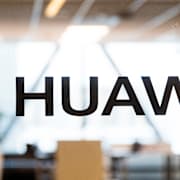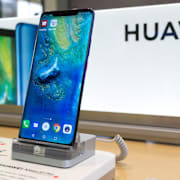
USA kritiserar Boris Johnsons ja till Huawei
Vita huset riktar hård kritik mot Storbritannien för att landet låter kinesiska Huawei delta i den brittiska utbyggnaden av 5G-infrastruktur, skriver Politico.
”USA är besviket över Storbritanniens beslut. Det finns inga säkra sätt att förhindra att opålitliga aktörer tar kontroll över delar av 5G-nätverket”, skriver administrationen i ett uttalande.
Enligt uttalandet ska USA fortsätta arbeta för en ”väg framåt” för att exkludera Huawei från europeiska marknader. USA ser Huawei som en säkerhetsrisk och menar att bolaget kan använda 5G-tekniken för övervakning och spionage.
Läs mer
bakgrund
5G
Wikipedia (en)
5G is the fifth generation wireless technology for digital cellular networks that began wide deployment in 2019. As with previous standards, the covered areas are divided into regions called "cells", serviced by individual antennas. Virtually every major telecommunication service provider in the developed world is deploying antennas or intends to deploy them soon. The frequency spectrum of 5G is divided into millimeter waves, mid-band and low-band. Low-band uses a similar frequency range as the predecessor, 4G.
5G millimeter wave is the fastest, with actual speeds often being 1–2 Gb/s down. Frequencies are above 24 GHz reaching up to 72 GHz which is above the extremely high frequency band's lower boundary. The reach is short, so more cells are required. Millimeter waves have difficulty traversing many walls and windows, so indoor coverage is limited.
5G mid-band is the most widely deployed, in over 20 networks. Speeds in a 100 MHz wide band are usually 100–400 Mb/s down. In the lab and occasionally in the field, speeds can go over a gigabit per second. Frequencies deployed are from 2.4 GHz to 4.2 GHz. Sprint and China Mobile are using 2.5 GHz, while others are mostly between 3.3 and 4.2 GHz, a range which offers increased reach. Many areas can be covered simply by upgrading existing towers, which lowers the cost.
5G low-band offers similar capacity to advanced 4G. T-Mobile and AT&T launched low-band services on the first week of December 2019. T-Mobile CTO Neville Ray warns that speeds on his 600 MHz 5G may be as low as 25 Mbit/s down. AT&T, using 850 MHz, will also usually deliver less than 100 Mbit/s in 2019. The performance will improve, but cannot be much higher than good 4G in the same spectrum.
Verizon, AT&T, and almost all 5G providers in 2019 have latencies between 25–35 milliseconds. The "air latency" (between a phone and a tower) in 2019 equipment is 8–12 ms. The latency to the server, further back in the network, raise the average to ~30 ms, 25–40% lower than typical 4G deployed. Adding "Edge Servers" close to the towers can bring latency down to 10–20 ms. Lower latency, such as the often touted 1 ms, is years away and does not include the time to the server.
The industry project 3GPP defines any system using "5G NR" (5G New Radio) software as, "5G", a definition that came into general use by late 2018. Previously, some reserved the term for systems that deliver frequencies of 20 GHz shared called for by ITU IMT-2020. 3GPP will submit their 5G NR to the ITU. In addition to traditional mobile operator services, 5G NR also addresses specific requirements for private mobile networks ranging from industrial IoT to critical communications.
Omni är politiskt obundna och oberoende. Vi strävar efter att ge fler perspektiv på nyheterna. Har du frågor eller synpunkter kring vår rapportering? Kontakta redaktionen



